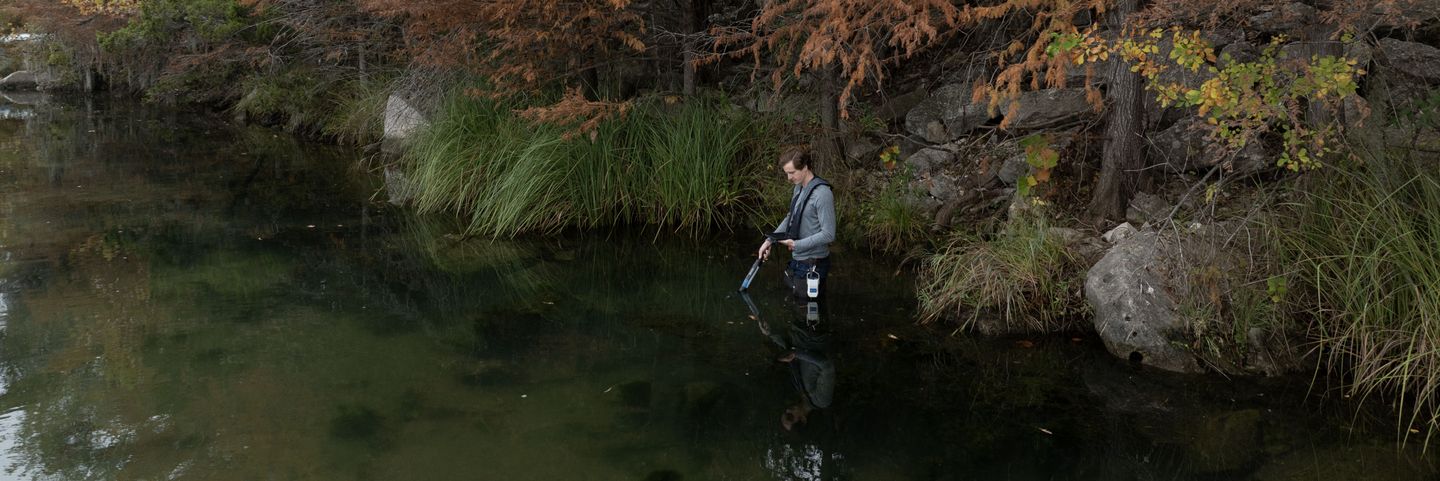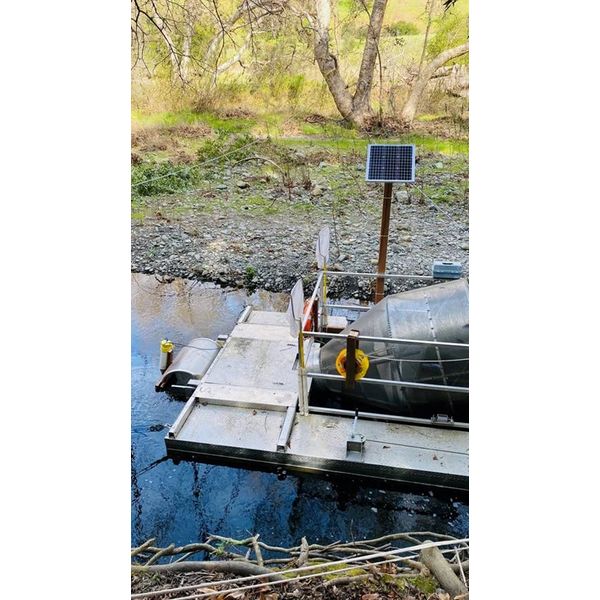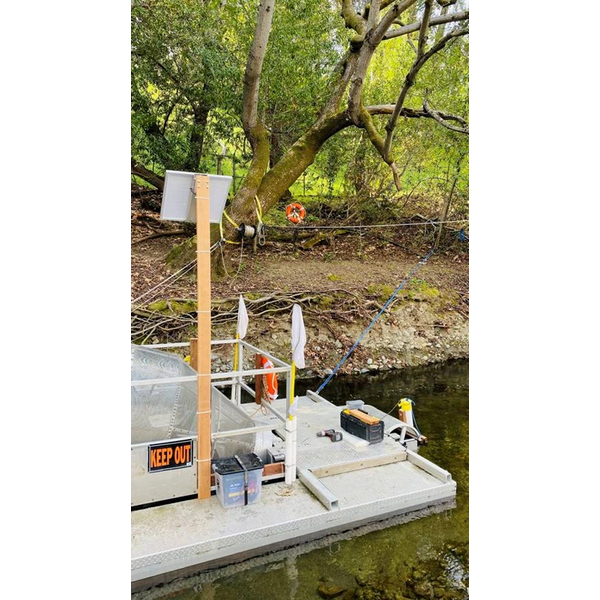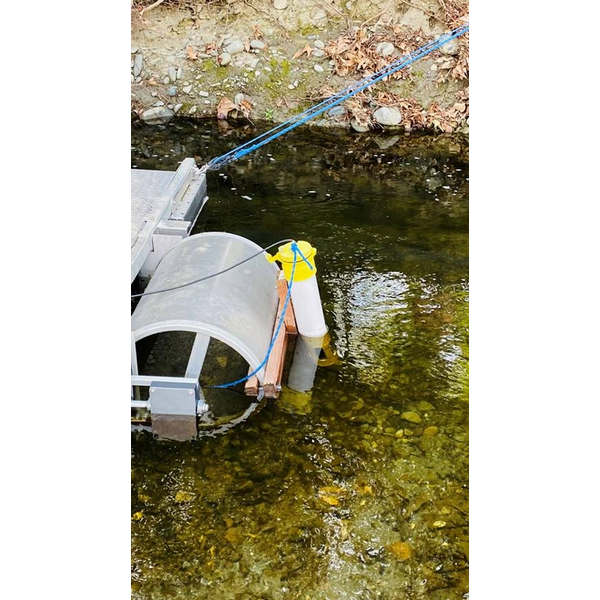

- Home
- Companies
- Solinst Eureka LLC
- Articles
- SFPUC: Solar Charged Continuous ...
SFPUC: Solar Charged Continuous Monitoring in Rugged Conditions - Case Study
Overview
As part of the Alameda Creek Aquatic Resources Monitoring Program, near the town of Sunol, CA, the San Francisco Public Utilities Commission (SFPUC) operates a rotary-screw trap (RST) and fyke trap. Trapping data is used to document the downstream movement patterns of fishes, and age-class-specific relative abundances of juvenile Oncorhynchus mykiss, in the southern portion of upper Alameda Creek. The different trap tyles allow for monitoring over a wide range of conditions, with the screw trap fishing at higher flows (about 25 to 400 cfs) and the fyke fishing at lower
lows (about 10 to 40 cfs).
Biologists check the traps daily from February through May. Daily water quality data is collected on the days that the traps are fishing to explore possible correlations with fish capture rates, and to add to the SFPUC’s long term dataset.
Manually collecting daily water quality data is time consuming, while relatively expensive water quality instruments used by multiple biologists take a beating over long field seasons. Alameda Creek exhibits flashy hydrologic conditions, with the probability of damage to water quality probes installed at fixed locations high.
SolutionA Eureka Manta 30 water quality sonde was installed on the downstream end of the SFPUC’s RST, allowing for the units probes to remain submerged during creek flow fluctuations. The sonde is powered by a 12-volt battery that is continuously charged using a small solar panel mounted to the trap. Water quality readings are taken every three hours.
ResultsIn 2022 the Eureka Manta 30 probe collected data at three-hour intervals for four consecutive months during the SFPUC’s fish trapping season. The probe was calibrated approximately once per month, with the 12-volt solar charged battery providing continuous readings.



